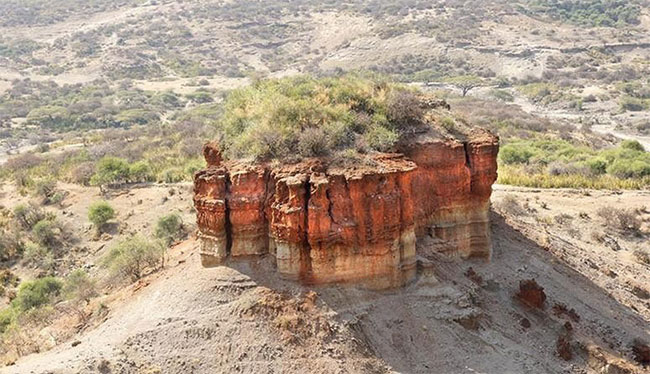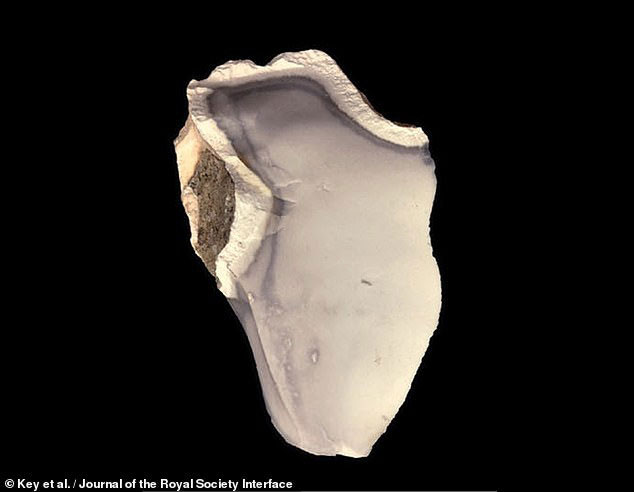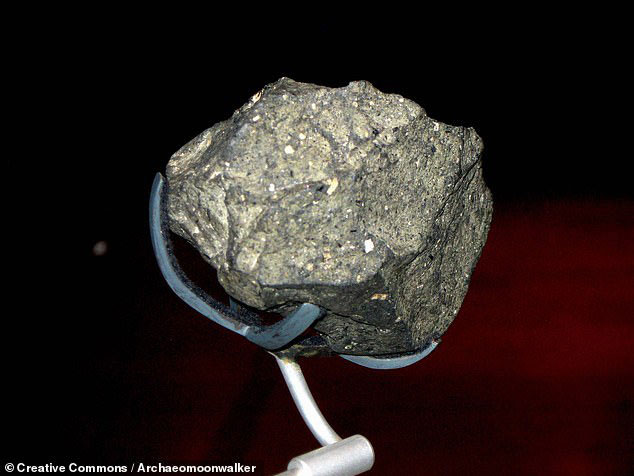'Canyon of other human beings' hides incredible civilization
Sophisticated tools, aged 1.2-1.85 million years, long before the advent of Homo sapiens, surprised archaeologists.
Another stone age, incredible progress has appeared in the history of his genus, since the Earth was dominated by extinct humans and it was far from our Homo sapiens footprints (Homo sapiens are only over 300,000 years old, new research from the University of Kent (UK) shows.
A team of scientists led by archaeologist Alsstair Key used modern techniques to assess the sharpness and durability of basalt, chert sedimentary and quartz samples collected from the peculiar gorge Olduvai. In Tanzania (East Africa), the "mecca" of other human species became extinct.

Olduvai Gorge - (photo: Shadows of Africa).
The specimens show that they are not only human tools, but also good enough and sophisticated as the tools that Homo sapiens we used in our Stone Age. Not only that, but the extinct people also select the type of stone suitable for the purpose of use: the finest quartz but less durable, can be used to cut the soft muscle tissue of animals, while basalt for the The dullest but most solid blade is used for movements that require strength but are less delicate.

A chert stone blade - (photo provided by the team).
The improvement of tools appears clearly: the people here have optimized the tools during the period of 1.85 to 1.2 million years, making them more and more convenient.

Another tool is being analyzed - (photo provided by the team).
The findings "show unprecedented complexity in the way raw material functions are considered, flexibly managed by many different species of humans," according to the authors' statement.
The research has just been published in the Journal of the Royal Society Interface.
Olduvai gorge stretches to 48km, with steep terrain. It has revealed traces of many extinct species such as Homo habilis, Homo erectus, hominid paranthropus boisei, and later our ancestors Homo sapiens.
- The 10 most interesting mysteries of lost civilizations (Part 2)
- The sea of fog covered the Grand Canyon
- Discover the world's longest freezing gorge
- The greatest canyon in the world hiding under the ice in Antarctica?
- Human civilization may end in 2050
- Video: Famous phenomenon of overflowing ravines in America
- Impressed by the series of
- Grand Canyon National Park - United States of America
- Prove that humans are not alone in the universe by mathematics
- Secret 1.2 billion years under the Grand Canyon
- 10 thrilling things about Maya civilization
- Where is the majestic Providence Canyon in America created?
 'Fine laughs' - Scary and painful torture in ancient times
'Fine laughs' - Scary and painful torture in ancient times The sequence of numbers 142857 of the Egyptian pyramids is known as the strangest number in the world - Why?
The sequence of numbers 142857 of the Egyptian pyramids is known as the strangest number in the world - Why? History of the iron
History of the iron What is alum?
What is alum? If your hand has this spot, you may have the blood of another species.
If your hand has this spot, you may have the blood of another species.  'Ghost humans' discovered leaving 'hybrid offspring' in 3 modern countries
'Ghost humans' discovered leaving 'hybrid offspring' in 3 modern countries  Humans Unknown Hiding in Asia for 100,000 Years
Humans Unknown Hiding in Asia for 100,000 Years  Reconstructing the face of a person who lived 50,000 years ago
Reconstructing the face of a person who lived 50,000 years ago  East Asians carry genes of another human species with many abnormalities
East Asians carry genes of another human species with many abnormalities  Will history be turned upside down when a 780,000-year-old alien kitchen is discovered in the Dead Sea?
Will history be turned upside down when a 780,000-year-old alien kitchen is discovered in the Dead Sea? 